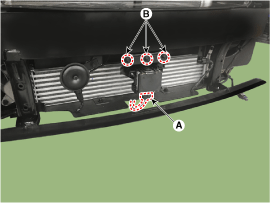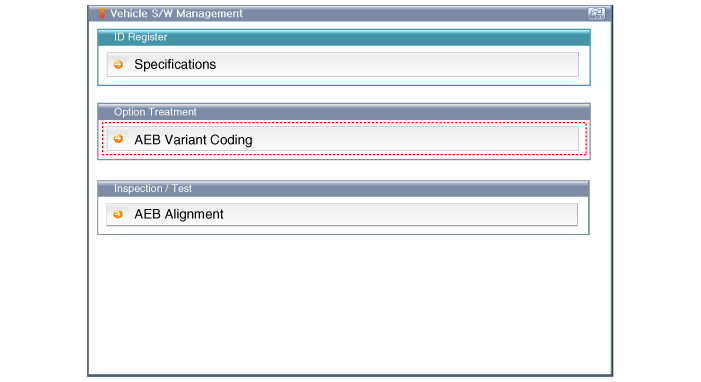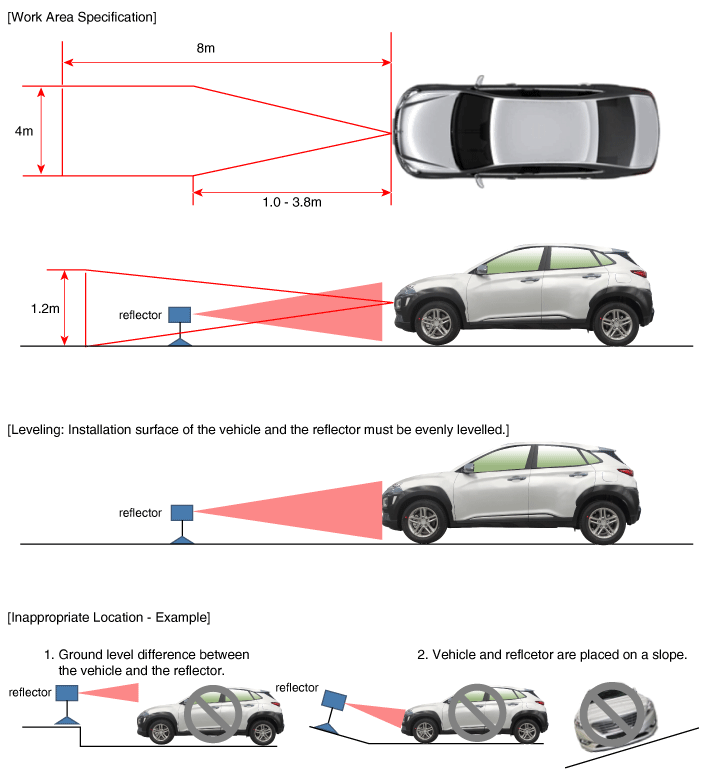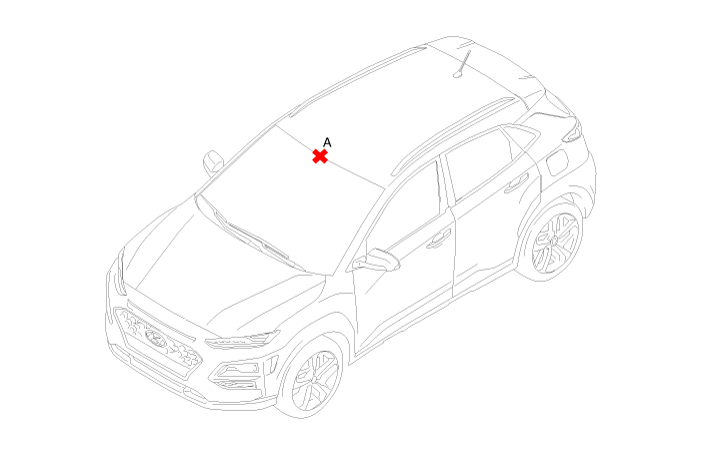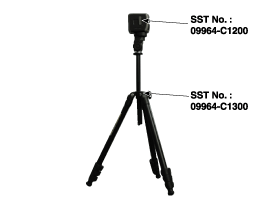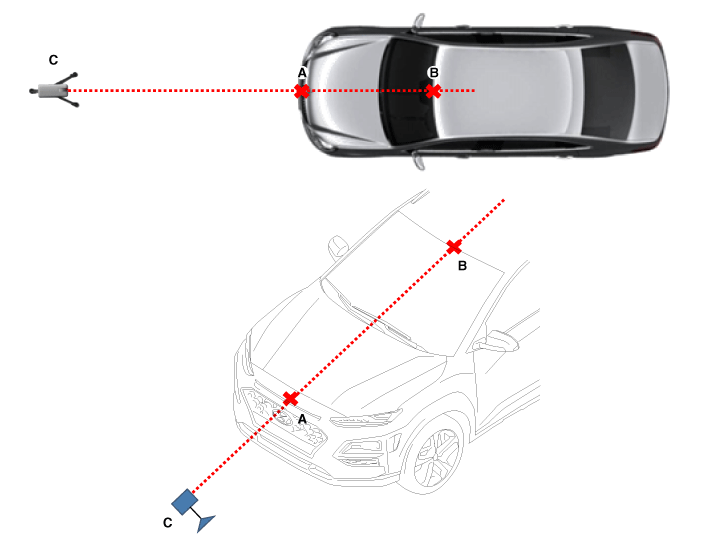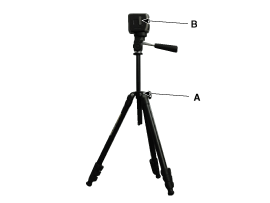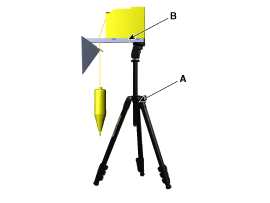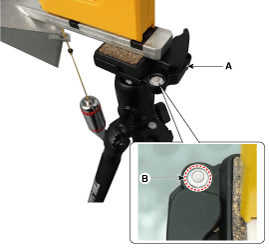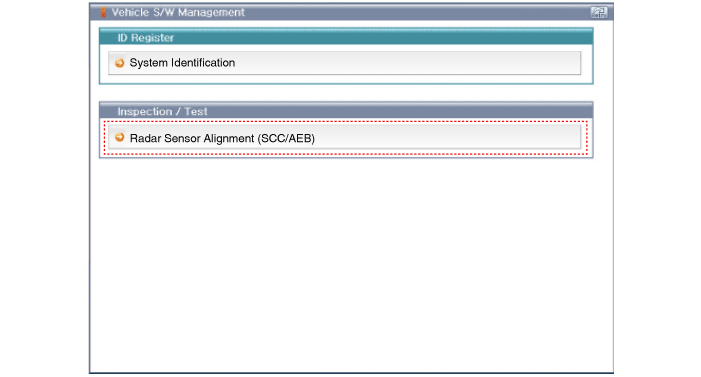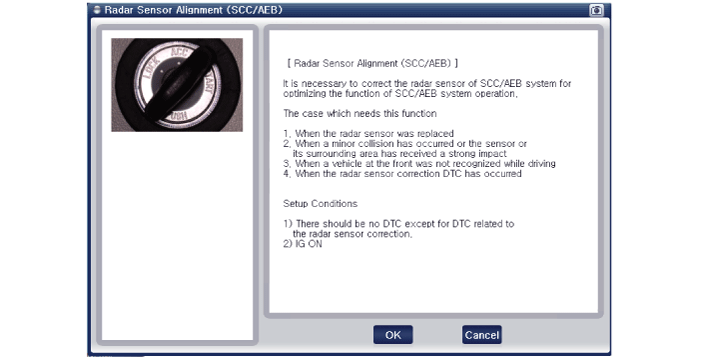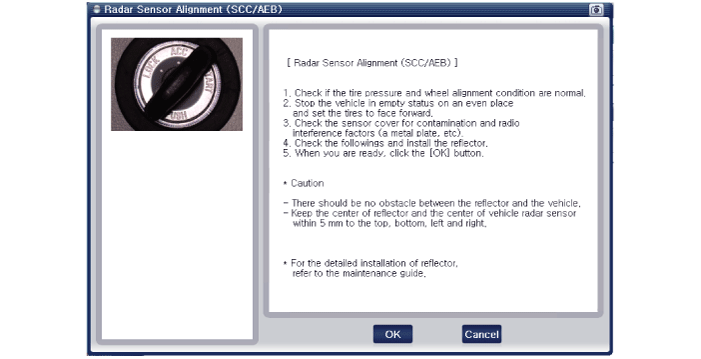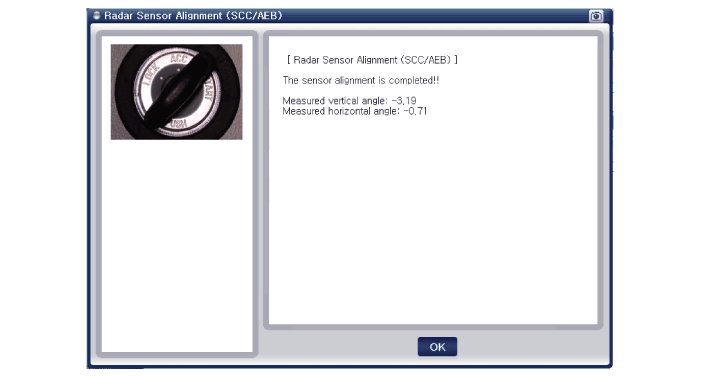Hyundai Kona: Forward Collision-Avoidance Assist (FCA) System / Repair procedures
Hyundai Kona (OS) 2018-2025 Service Manual / Brake System / Forward Collision-Avoidance Assist (FCA) System / Repair procedures
| Inspection |
| – |
The ON/OFF for FCA is included in the USM (User Setting Menu) and the
default is ON.
|
| – |
While IGN is On, it stays at ON, however, the driver's settings do not
last next time when IGN is newly On.
|
| – |
When VDC is OFF, FCA is also turned OFF.
|
| Removal |
[FCA Radar]
| 1. |
Remove the front bumper cover.
(Refer to Body - "Front Bumper Cover")
|
| 2. |
Remove the FCA rader (A).
|
| 3. |
Loosen the bolts (B) and then removing the FCA unit assembly from the
veicle.
|
| Installation |
[FCA Radar]
| 1. |
To install, reverse the removal procedure.
|
| 2. |
Perform the FCA radar alignment.
|
| Adjustment |
[(FCA) Radar Sensor Alignment]
FCA system is designed to help avoid a potential collision or reduce its impact
when drivers applies inadequate, delayed or no brakes at all to avoid a collision.
In order for the radar sensor to operate correctly, it must be properly aligned
parallel to the driving direction of the vehicle.For this reason, the radar
sensor alignment procedure must be carried out whenever the sensor has been
reinstalled or replaced with a new one.
If the sensor alignment procedure is not performed in the conditions mentioned
above, the smart cruise control system may not operate correctly.
The FCA radar sensor alignment is required when :
|
If the sensor cannot detect the vehicle in front :
|
[Radar Sensor Alignment]
|
| 1. |
Park the vehicle on a level ground.
|
| 2. |
Mark the center point on top of wind glass (A).
|
| 3. |
Mark the center point of emblem (A).
|
| 4. |
Mount the FCA Calibration Laser [SST No. : 09964-C1200] onto the tripod
[SST No. : 09964-C1300].
|
| 5. |
Install the vertical/horizontal laser [SST No. : 09964-C1200] (A) at
least 2.5 m to the front of the vehicle.
|
| 6. |
Match the vertical line of laser to (A) and (B) using the vertical/horizontal
laser (C) [SST No. : 09964-C1200].
|
| 7. |
Mark (C) at 2.3 - 2.5m (90.55 - 98.42 inch) from (A) in front of the
vehicle.
|
| 8. |
Remove the FCA Calibration Laser [SST No. : 09964-C1200] (B) from the
tripod [SST No. : 09964-C1300] (A).
|
| 9. |
Mount the reflector [SST No. : 09964-C1100] (B) onto the tripod [SST
No. : 09964-C1300] (A).
|
| 10. |
Align the vertical weight (B) of the FCA Calibration Reflector [SST
No. : 09964-C1100] (A) with the point (C).
|
| 11. |
Using the bubble level (B) of the tripod [SST No. : 09964-C1300] (A),
set the reflector horizontally.
|
| 12. |
Set the height of the FCA calibration reflector [SST No. : 09964-C1100]
(A) to 339mm (13.35inch).
|
| 13. |
Visually check again the radar sensor and the surface of the front bumper
for the following.
|
| 14. |
Connect the KDS/GDS to the DLC of the vehicle and start sensor alignment.
|
| 15. |
After correctly selecting the vehicle model, select "FCA Alignment"
from the auxiliary functions in KDS/GDS Menu.
|
| 16. |
Perform sensor alignment as indicated on the KDS/GDS monitor.
|
| 17. |
In case of sensor alignment failure, check the alignment conditions.
Turn the ignition key OFF, then reperform the sensor alignment procedure.
|
 Schematic diagrams
Schematic diagrams
Schematic Diagram
Terminal Function
No
Function
1
-
2
C-CAN Low
...
Other information:
Hyundai Kona (OS) 2018-2025 Service Manual: Back View Camera System Repair procedures
Removal
1.
Disconnect the negative (-) battery terminal.
2.
Remove the trunk lide trim.
(Refer to Body - "Trunk Lid Trim")
3.
Disconnect the back view camera conn ...
Hyundai Kona (OS) 2018-2025 Service Manual: Front Bumper Cover Components and components location
Component Location
1. Front bumper cover
...
© 2018-2025 www.hkona.com

